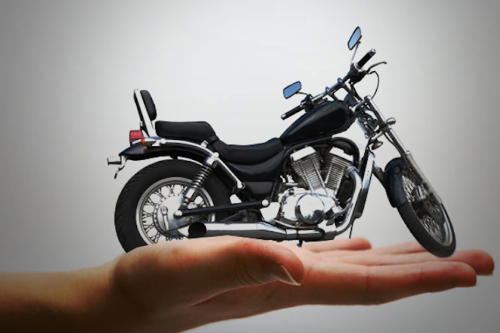Motorcycle Insurance: Protecting Your Ride and Your Future

This article will explain the basics of motorcycle insurance, the different types of coverage available, how to choose the right policy, and tips for saving on premiums.
What is Motorcycle Insurance?
Motorcycle insurance is a contract between the motorcycle owner and an insurance company. In exchange for paying a premium, the insurance company agrees to cover certain financial losses associated with owning and operating a motorcycle. These losses can include damage to the motorcycle, medical expenses, liability for injuries to others, and even theft.
Types of Motorcycle Insurance Coverage
There are several types of coverage available under a motorcycle insurance policy. Understanding each can help you select the right level of protection:
Liability Coverage:
Bodily Injury Liability: This coverage pays for injuries you cause to others in an accident. It can cover medical expenses, lost wages, and even legal fees if you're sued.
Property Damage Liability: This covers damage you cause to someone else's property, such as another vehicle or a fence, during an accident.
Collision Coverage:
Collision coverage pays for the repair or replacement of your motorcycle if it's damaged in an accident, regardless of who is at fault. This coverage is especially important if you have a newer or high-value bike.
Comprehensive Coverage:
Comprehensive coverage protects against non-collision-related damages, such as theft, vandalism, fire, or natural disasters. If your bike is stolen or damaged by something other than a collision, comprehensive coverage will help cover the costs.
Uninsured/Underinsured Motorist Coverage:
This coverage protects you if you're involved in an accident with a driver who doesn't have insurance or whose insurance is insufficient to cover the damages. It can cover your medical expenses and, in some cases, damage to your motorcycle.
Medical Payments Coverage:
Medical payments coverage, also known as MedPay, helps pay for medical expenses for you and your passengers in the event of an accident, regardless of who is at fault.
Personal Injury Protection (PIP):
Similar to MedPay, PIP covers medical expenses, but it also extends to lost wages and other costs associated with injuries sustained in an accident. PIP is not available in all states.
Accessory Coverage:
If you have customized your motorcycle with aftermarket parts or accessories, accessory coverage can help cover the cost of repairing or replacing them if they are damaged or stolen.
Why Motorcycle Insurance is Important
Motorcycle insurance is crucial for several reasons:
Legal Requirement: In most states, carrying at least liability insurance is mandatory. Riding without insurance can result in fines, license suspension, or even the impounding of your motorcycle.
Financial Protection: Accidents can lead to significant financial losses, including repair costs, medical bills, and potential legal expenses. Motorcycle insurance helps mitigate these costs, ensuring you're not left with a hefty bill.
Peace of Mind: Knowing you're protected against potential losses allows you to enjoy your ride with confidence. Whether you're cruising down the highway or navigating city streets, insurance provides the security of knowing you're covered.
How to Choose the Right Motorcycle Insurance Policy
Selecting the right motorcycle insurance policy involves assessing your needs, understanding your risks, and balancing coverage with cost. Here are some factors to consider:
Type of Motorcycle: The type of bike you ride (e.g., cruiser, sportbike, touring) can influence your insurance needs. High-performance bikes may require more coverage due to their higher risk.
Riding Habits: Consider how often and where you ride. If you use your motorcycle for daily commuting, you might need more comprehensive coverage than if you only ride occasionally.
Budget: Determine how much you can afford to pay for premiums. While it's tempting to opt for the lowest cost, ensure the coverage is sufficient to protect you in case of an accident.
Deductible: The deductible is the amount you pay out of pocket before your insurance kicks in. A higher deductible can lower your premium, but make sure you can afford the deductible if you need to file a claim.
Discounts: Many insurance companies offer discounts for things like safe riding courses, bundling with other insurance policies (like auto or home insurance), or even for storing your bike in a secure location. Ask about any available discounts to help reduce your premium.
Reputation of the Insurance Company: Research different insurance providers, read reviews, and check their customer service ratings. A reliable company with good customer service can make a significant difference, especially when filing a claim.
Tips for Saving on Motorcycle Insurance
Here are some tips to help you save on your motorcycle insurance premiums:
Take a Safety Course: Completing a motorcycle safety course can not only make you a better rider but can also qualify you for a discount on your insurance.
Maintain a Clean Riding Record: Avoiding accidents and traffic violations can help keep your insurance premiums lower.
Choose Your Bike Wisely: The type and value of your motorcycle affect your insurance rate. High-performance or expensive bikes usually cost more to insure.
Bundle Your Policies: If you have other insurance policies, such as home or auto insurance, consider bundling them with your motorcycle insurance for a discount.
Pay Annually: Some insurance companies offer a discount if you pay your premium in full annually rather than in monthly installments.
Conclusion
Motorcycle insurance is an essential investment for any rider, offering protection against accidents, theft, and liability. By understanding the different types of coverage and considering your specific needs and budget, you can choose a policy that provides the right level of protection for you and your motorcycle. With the right insurance in place, you can ride with confidence, knowing you're covered for whatever the road may bring.



